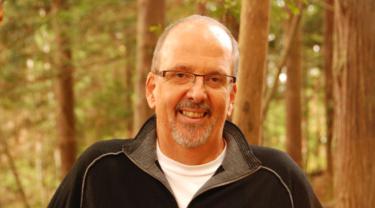Based in Gibsons, British Columbia, Canada Hemp Foods (CHF) exports raw hulled hemp seeds, hemp protein powder and hemp oil. Robert Rae is the company’s president and CEO.
Learn more about Canada Hemp Foods export success here.
When and where was your first major export sale outside North America?How did the opportunity to export to South Korea arise?
In May 2015, I was sponsored by the B.C. Ministry of International Trade to participate in the Seoul Food Show. Then in October of 2015 I got an email from a South Korean company unsuccessfully trying to find hemp seed in Europe. I think they contacted me almost out of desperation. They ordered a 20-foot container [of hulled hempseed].
What was the biggest challenge when you started exporting?
In our case it was meeting demand. The South Korean market is very trend-based and when the hulled hemp seed became a trend there was a huge, immediate demand. Fortunately, because of our sales in North America, we had developed an efficient supply chain.
How did you maximize the supply chain at the Port of Vancouver?
We used Canadian Food Inspection Agency (CFIA) phytosanitary inspectors in Vancouver; one of the benefits of an export port is that there are many CFIA inspectors. We had that advantage, because the companies who were trying to get phytos done in Manitoba were having to wait a week – in Vancouver you wait one day.
What other strategies enabled you to get your product to South Korea more quickly than your competitors?
We sold on a cost and freight (C&F) basis; buyers didn’t have to worry about how it was going to get to [the South Korean port of] Busan. Most of our competitors didn’t know how to do that, they were selling the product in Winnipeg and left it to the buyers to organize the logistics. We had a door-to-port service.
Managing logistics and cost is a huge competitive advantage. If you can be a week or two faster than your competitors and get your costs down, then that’s where the gains are. But, in this case, cost was not the primary factor. They were going to buy hemp seed no matter the price.
How many countries are you exporting to and what are your key markets?
We sell in more than 200 stores across Canada and the U.S. including Amazon and our own online store. South Korea is still a key market. We also sell in Japan, we’re looking at Vietnam and we get inquiries from China.
What percentage of your sales come from exports?
95 per cent, more than $18 million in 2016.
When you look back at your export experience, what do you know now that you wished you knew when you started?
Based on my experience of exporting to South Korea the biggest learning is not to try and predict the market. I decided I wanted to gain a time advantage by having inventory in Vancouver.
But in March, there was a national television broadcast in South Korea about heavy metals in flax seeds. Hemp was thrown under the bus at the same time and demand sunk to almost zero. We’re still dealing with that impact as the market struggles to recover.
The lesson is that holding on to inventory can kill you. That’s an old business rule, and I’ve learned it. We’re okay, because the people that we buy from have been very cognizant of what happened and they’ve shared the burden.
Trying to predict what an export market is doing will get you into trouble. Keep your inventories as low as possible, and force buyers to wait until you can deliver.
What advice do you have for other companies looking to grow through exporting?
There are many organizations that provide insights and practical support. In our case the B.C. Ministry of International Trade helped make connections and Export Development Canada insured our first few shipments to South Korea. EDC also invited me for a consultation on tips for exporting to new markets, which I gratefully accepted. This was a great help as we were doing business with new clients we hadn’t worked with previously.





